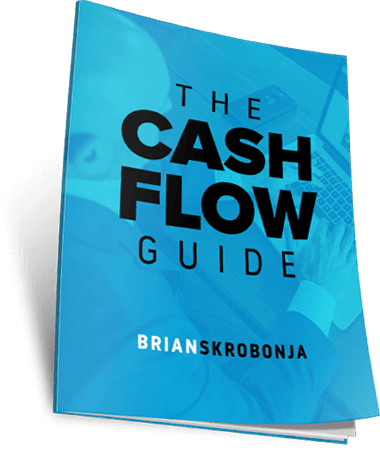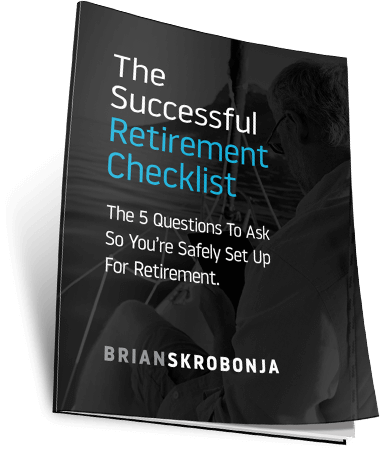The most common mistake people make when planning their retirement is assuming that the way wealth was created is the same way they should hold wealth in retirement with the added twist of being more conservative.
Popular belief suggests that as you age, the level of risk an investor takes should decline in an effort to preserve their assets and protect them from market loss. The general idea here is the younger you are, the more aggressive you should be and the older you are, the more conservative you should be.
The theory is that too much risk can lead to losses if markets decline with less time to recover, and by dialing down the risk it can help minimize losses.
But here is the problem – when you dial down risk you may solve for volatility and overall exposure to market losses but at the same time you are reducing your earnings potential which of course is the oxygen of a retirement plan.
It is a double-edged sword, if you take on too much risk, you run the risk of losing money. If you don’t take on enough risk then you run the risk of running out of money. Most people struggle to find a balance especially in a low interest rate environment.
One approach often used is to simply keep the risk moderately high with the belief that profits can be skimmed from the portfolio while remain below the total earnings for the year in an effort to protect principle and continue to grow the portfolio long term. A variation of this would be to use a dividend portfolio where you can receive dividends for income.
With either strategy you face uncertainty about how much income you will receive one quarter to the next and are forced to accept the possibility of having no earnings in a given year due to market volatility or poor company earnings.
How this plays out in real-life is income is taken regardless of market performance because there is a need for income in retirement. The result of this is the problem being exacerbated because in the absence of earnings you are depleting principle which only compounds the problem.
And if you think bonds are the answer, think again. With interest rates on the rise, there is a high probability of losing principle or having bond yields running below inflation rates. Finding a fixed income alternative is a serious challenge for investors who don’t knowing where to look.
Another popular idea is what is known as the “4% Rule” for taking distributions. The theory is that based on past performance, if you withdraw 4% from your accounts then you “should” statistically carry those assets for thirty years.
This brings up another issue beyond just the potential for market losses and that is the effects of inflation. Inflation is the silent killer of all retirement plans by gradually reducing the purchasing power of your assets over time.
To shed some light to this problem, consider a 4% distribution, a 3% inflation rate, fees around 1%. The math concludes that the breakeven is 8% year over year with no consideration for down years or volatility.
The risk here is the longevity which is why the 4% Rule suggests a thirty-year period. It is assumed that you will eventually run out of money. Couple this with a few bad years in the market and you have a recipe for principal depletion acceleration.
In order for a growth portfolio to flourish, the account needs time to do what its name suggests – to grow. And when you are taking income from a portfolio designed for growth, you are sabotaging the progress.
Here is what is happening with all of these scenarios. There is an assumption that the way wealth was created – typically using a portfolio of growth stocks and ETF’s – is the same way wealth should be held in retirement but leaning more conservative.
All of the confusion and challenges with generating income…they all originate in this misconception. The mindset that rate of return and growth is the means for distributing income is the problem and cannot be achieved without a lot of luck on your side and that is not a retirement plan.
So, what is The Five-Minute Retirement Plan
As I have explained, the biggest hurdle when it comes to retirement planning is the mindset you have about it. The primary goal of building wealth is to generate income. The reason so many people struggle with transitioning from building wealth to using wealth is because they don’t make this mental shift to income.
They are stuck in the building and growing mentality where everything is about growth and rates of return. That mindset is not congruent with retirement. You have to make the shift to income.
When you try to continue to build wealth and take income from the same pot of money you get stuck in a continuum. It’s like driving with one foot on the brake and the other on the gas. You’re just going to burn a lot of fuel and not get very far.
Most clients come to me for help when they get stuck and find themselves transitioning from having to work for a living to worrying about their money for a living and neither is a picture of freedom. The solution for this is really quite simple when you resolve to the fact that, growing money is done one way and distributing income is done another way.
True financial freedom emerges when you no longer have to work and that can only happen as a result of generating income from the assets you have accumulated. Get this straight and your golden.
The caveat is this, financial freedom is only achieved if the income is sustainable and you’re not waking up every day wondering if that freedom is going to be washed away with the next pandemic, political decision, leadership decisions, and a slew of other things outside of your control
So, once you have your thinking centered around income, you will begin by figuring out how much income you need to supplement your social security and pension income to live the life you are planning to live. You have to know this otherwise your just making numbers up and that just compounds the problem.
Once you have that figured out, you will take that annual income total and divide it by six percent. Why six percent, this is the average using my Assets2Income™ method. I am not going to get into how this works in this episode but if you would like to learn more you can access a training video, I did at brianskrobonja.com/training-video.
The result you get after the calculation is the approximate amount needed to be set aside for generating the income you need right now to retire. The remaining assets will be separated and invested long term as an inflation hedge.
I am not going to get into the specifics of what private market investments or insurance products are used in these designs since this is ever changing depending on market conditions and I have spoken about these extensively in other podcasts.
By following the steps in the Five-Minute Retirement Plan and coupling it with The Assets2Income™ Method, retirees are able to strategically separate their assets and solve for the two biggest variables within their retirement: Income now and income later.
As always, if you have questions or would like to discuss the particulars of your situation with us, visit brianskrobonja.com/consultation







